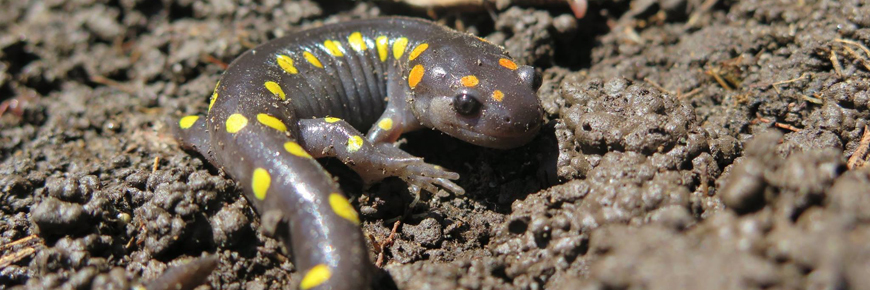
Nature and science
Bruce Peninsula National Park
An iconic landscape with rugged shoreline and clear blue water, the Bruce Peninsula National Park is popular with nature lovers and sightseers alike. Behind this striking scenery, nature creates a mosaic of habitats from the key elements – dolomite (limestone) bedrock, lakes, and mixed-wooded forests. The park is the core protected area of the UNESCO Niagara Escarpment World Biosphere Reserve. The escarpment is an ancient tree lined ridge of limestone that stretches from Niagara Falls across Southern Ontario to the Bruce Peninsula and separates Georgian Bay from Lake Huron.
Biodiversity is the Bruce’s natural claim to fame, with a unique diversity of species that include species at risk. Here the last unbroken stand of forest in the densely-populated Southern Ontario region can be found. This large block of wilderness is important to species such as the Black Bear, Red-shouldered Hawk, and Northern Flying Squirrel.
Globally rare Alvar ecosystems are also found here. These flat rocky areas with thin soils have plants adapted to grow under extreme conditions. Streams, ponds, marshes and fens (wet meadows) are important ecosystems for birds, insects, amphibians and reptiles such as turtles.
Environment
As part of the Great Lakes and St. Lawrence Lowlands, the moderate, four season climate influenced by the Great Lakes and variety of habitats found here contributes to diverse ecosystems and biodiversity in Bruce Peninsula National Park. Lakes, rocky shoreline, cliffs, caves, dunes, marshes, and forest – all are found at the Bruce Peninsula.
Conservation
Special places require careful stewardship and monitoring. Bruce Peninsula National Park was established in 1987 to protect this unique area. It is also a part of the UNESCO Niagara Escarpment World Biosphere Reserve. The park contains the longest stretch of undeveloped Niagara Escarpment and Lake Huron shoreline, protected for future generations.
Conservation projects
Animals
The diverse array of ecosystems in Bruce Peninsula National Park are home to a wide variety of fascinating creatures. The big mixed forests are habitats for species such as Black Bears , Red-shouldered Hawks, Ovenbird, Fishers, Yellow-spotted Salamanders, Barred Owls, and Northern Flying Squirrels. In the park's wetlands and lakes, fish such as Yellow perch, thrive, insects buzz about and amphibians such as salamanders and reptiles, including the at risk Common Snapping Turtle, call the marshy lowlands home. Commonly seen wildlife species in the park include Red Squirrel, Eastern Chipmunk, Raccoon, Porcupine, Green Frog, Leopard Frog, Painted Turtle and Common Garter Snake.
Plants
The park is abundant with different types of trees, plants and tiny organisms. From twisted old-growth cedars clinging to the cliff face, to a stunning variety of wildflowers and countless species of algae, mosses and lichen. The dominant tree species in park forests are softwoods such as Eastern White Cedar; however, it is a mixed forest that also includes maples and pine. The park is best known for its unique wildflowers, especially orchids. There are 34 orchid species in the park, which is 2/3 of all orchid species found in Ontario. The variety of habitats and moderate climate are ideal for many species to flourish here!
- Date modified :